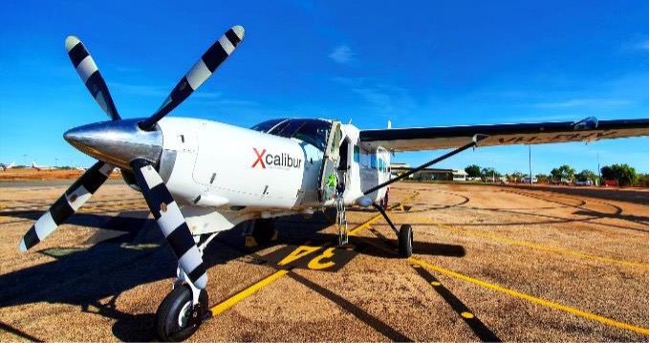OD6 Metals Limited (ASX:OD6) has commenced an airborne electromagnetic survey at both its Splinter Rock and Grass Patch Projects in the Esperance region of Western Australia. Both Projects are considered prospective for clay hosted rare earth elements (REEs).
Highlights:
• Survey aims to identify and map clay locations, expanse, depth and thickness
• Over 4,600 sq. km of tenement area to be surveyed
• 13,450 line km electromagnetic survey to be flown at 400m spacings
• This will enable future targeted drilling of high priority exploration areas
• Survey to be completed during October with analysis of data to be completed in Q4 2022
“The airborne electromagnetic survey is a significant investment by OD6 to help identify and map clay locations, expanse, depth, and thickness across our entire 4,600 sq. km tenement package,” Managing Director, Brett Hazelden, said.
“This survey will continue to build on the techniques and knowledge development in conjunction with the CSIRO and will enable targeted drilling of our high priority exploration areas during the next drilling programmes.”
The Airborne Electromagnetic Survey will be flown across both the Splinter Rock Project and Grass Patch Project, which are located to the north and northeast of Esperance, Western Australia.
The survey, to be undertaken by Xcalibur Multiphysics, will use the Tempest airborne electromagnetic (AEM) survey system. AEM surveys map the electrical conductivity of the subsurface.
The system consists of a transmitter loop fitted to a fixed wing aircraft, with a receiver bird that is towed along behind the aircraft. As the aircraft flies along a pre-determined flight path, the system transmits a signal into the ground with the receiver then measuring the response of the returned signal. This recorded information maps the conductivity of the subsurface, which can be modelled to infer clay thickness.
The survey will be flown at 400m spacing and will total 13,450 line km.
Resulting Tempest Electromagnetic data can be used to map the electrical conductivity of rocks and soils below ground. Where electrical conductivity is high, it can indicate rock layers containing salt water or those which are clay rich or contain sulphide mineralisation. Where electrical conductivity is low, it can indicate zones of non-conductive rock, sand or fresh water.
The Tempest Electromagnetic survey utilises the same technique as that recently reviewed in conjunction with the CSIRO.
The early assessment of this reprocessed and modelled data shows that this technique can indeed map regolith (clay) thicknesses and deep channels that are targets and identify areas of sub-cropping fresh rock or thick sand-dunes to be avoided.
The key outcome of the survey is to identify and map clay locations, expanse, depth and thickness across OD6’s current tenement areas. The mapping of clays will then enable targeted drilling of our high priority exploration areas over the next six to 18 months.
Completion of the airborne electromagnetic survey is currently scheduled for late October timeline 2022. Analysis of the data will be completed during Q4 2022.
For further information please visit: https://www.od6metals.com.au/












